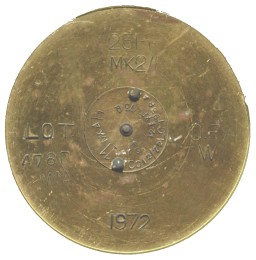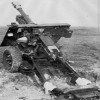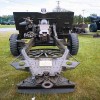|
|
||||||||||||||||||||||||||||||||||||||||||||||||||||||||||||||||||||||||||||||||||||||||||||||||||||||||||||||||||||||||||||||||||||||||||||||||||||||||||||||||||||||||||||||||||||||||||||||||||||||||||||||||||||||||||||||||||||||||||||||||||||||||||||||
 |
||||||||||||||||||||||||||||||||||||||||||||||||||||||||||||||||||||||||||||||||||||||||||||||||||||||||||||||||||||||||||||||||||||||||||||||||||||||||||||||||||||||||||||||||||||||||||||||||||||||||||||||||||||||||||||||||||||||||||||||||||||||||||||||
| By Lasse Jensen |
Last updated 18 Marts 2002 |
|||||||||||||||||||||||||||||||||||||||||||||||||||||||||||||||||||||||||||||||||||||||||||||||||||||||||||||||||||||||||||||||||||||||||||||||||||||||||||||||||||||||||||||||||||||||||||||||||||||||||||||||||||||||||||||||||||||||||||||||||||||||||||||
 Royal Ordnance Quick Fire 25 pounder Mark II
Royal Ordnance Quick Fire 25 pounder Mark II
|
||||||||||||||||||||||||||||||||||||||||||||||||||||||||||||||||||||||||||||||||||||||||||||||||||||||||||||||||||||||||||||||||||||||||||||||||||||||||||||||||||||||||||||||||||||||||||||||||||||||||||||||||||||||||||||||||||||||||||||||||||||||||||||||
|
||||||||||||||||||||||||||||||||||||||||||||||||||||||||||||||||||||||||||||||||||||||||||||||||||||||||||||||||||||||||||||||||||||||||||||||||||||||||||||||||||||||||||||||||||||||||||||||||||||||||||||||||||||||||||||||||||||||||||||||||||||||||||||||
|
|
||||||||||||||||||||||||||||||||||||||||||||||||||||||||||||||||||||||||||||||||||||||||||||||||||||||||||||||||||||||||||||||||||||||||||||||||||||||||||||||||||||||||||||||||||||||||||||||||||||||||||||||||||||||||||||||||||||||||||||||||||||||||||||||
|
The 25pdr Mark 2 is continuously
development of the 25pdr Mark 1. The Mark 1 sat on the old 18pdr carriage
which would not stand a propellant charge powerful enough to send a 25pdr
shell the desired 15.000 yards, which was the requirement set forth by the
Royal Artillery experts. The Mark 1 could only shoot 11.800 yards. In 1936 a decision to increase the range to 13.500 yards carried with it approval to design a new equipment capable of firing super charge. Early in 1938 a split-trail pilot equipment had passed technical and field tests, had been approved for introduction into the service, and a small order placed. However, at 41 cwt (2087 kg) it was rather heavy; instead the Royal Artillery favored a box-trail carriage with a firing platform as fitted to an experimental 105-mm gun produced by Vickers in 1922. This was an improved version of the original gun wheel platform, developed as an anti-tank measure in 1918. Production of the split-trail equipment was therefore held up while one of the 25pdr Mark 2 guns was fitted to the Vickers carriage. After a demonstration at the School of Artillery, Larkhill (now the Royal School of Artillery) , those taking part voted unanimously in favor of the latter combination. It became the legendary "25 Pounder Mark 2 on Mark 1 carriage", familiar to all Commonwealth Gunners who served from World War 2 to the 1960s. The Mark 2 gun first saw action in Norway in 1940, and by 1945 over 12 000 had been made, by Britain alone!. The strength of the carriage was amply demonstrated in 1943 when the first QF 17-pr anti-tank guns were mounted upon it; it easily stood up to the much more powerful piece. The Germans appreciated a good gun when they saw one. They put all 25-pdrs captured in serviceable condition into service in their own forces; they formed whole regiments of 25pdrs Mark 2, which they designated 8.76cm FK 280(e) (split-trail carriage) [FK = Feld Kanone, field gun]. They were deployed for coast defense. A mark 2/1 of the gun emerged in 1942, with the fitting of a Muzzle brake to ease the strain on the carriage caused by the firing of super charge (later super plus increment), and the radiusing of the corners of the breech ring to strengthen it and prevent cracking. Towards the end of World War 2 a Mark 2 carriage with a wheel-base of reduced width was introduced to enable the gun to be towed by light vehicles, eg jeeps in the jungle, or be carried in an aircraft, but it was far from satisfactory - or popular. Every time the layer turned the traversing handwheel he skinned his knuckles on the left gun wheel. In order that Armored units might be supported by field guns with the same cross-country performance as tanks, several self-propelled equipments were produced for the Royal Horse Artillery, only two of which saw service. These were the Bishop (25pdr on Valentine tank chassis) and the Sexton (25pdr on Sherman tank chassis). It was one of the first weapons designed as a gun / howitzer combining the best features of these weapon types. It uses variable charges allowing it the ability to fire its projectiles in a high arc similar to a howitzer but also may fire at high velocities for a flat trajectory. During the fighting in North Africa during 1941-42 it was pressed into use as an anti-tank weapon where it proved itself in that role as well. The carriage has a circular base plate which is lowered for firing, this raises the wheels off the ground and allows the weapon a 360' traverse. It is designed for high speed travel and a gun shield is provided. The firing platform is in the form of a wheel which is carried either under the trail or on the back of the prime mover. The gun can be placed in firing order on its platform in 1 minute. To place the piece in action, the platform is lowered to the ground and the carriage is then manhandled or tractor-drawn over it and coupled to its center. To permit easy maneuvering of the trail, the spade has been imbedded in a "box" commonly called a "banana," which functions very effectively and prevents the trail from digging in. Each gun was pulled by a Field Artillery Tractor (FAT), also known as a Quad, behind a ‘trailer, artillery no 27’, better known as a limber. It is a testament to the design of the gun that only one major review was undertaken (1940, resulting in the mark 2) despite the gun remaining in service with various armies to this day. As recently as 1980 some 26 other countries were still employing the 25-pdr, and many probably still are. The last major campaign in which the gun fought was the Indo-Pakistan war of 1971. |
||||||||||||||||||||||||||||||||||||||||||||||||||||||||||||||||||||||||||||||||||||||||||||||||||||||||||||||||||||||||||||||||||||||||||||||||||||||||||||||||||||||||||||||||||||||||||||||||||||||||||||||||||||||||||||||||||||||||||||||||||||||||||||||
|
|
||||||||||||||||||||||||||||||||||||||||||||||||||||||||||||||||||||||||||||||||||||||||||||||||||||||||||||||||||||||||||||||||||||||||||||||||||||||||||||||||||||||||||||||||||||||||||||||||||||||||||||||||||||||||||||||||||||||||||||||||||||||||||||||
|
|
||||||||||||||||||||||||||||||||||||||||||||||||||||||||||||||||||||||||||||||||||||||||||||||||||||||||||||||||||||||||||||||||||||||||||||||||||||||||||||||||||||||||||||||||||||||||||||||||||||||||||||||||||||||||||||||||||||||||||||||||||||||||||||||
|
References: The Story of the Twenty-five Pounder by WL Ruffell Additional web resources. Various web notes. |
||||||||||||||||||||||||||||||||||||||||||||||||||||||||||||||||||||||||||||||||||||||||||||||||||||||||||||||||||||||||||||||||||||||||||||||||||||||||||||||||||||||||||||||||||||||||||||||||||||||||||||||||||||||||||||||||||||||||||||||||||||||||||||||
|
|
||||||||||||||||||||||||||||||||||||||||||||||||||||||||||||||||||||||||||||||||||||||||||||||||||||||||||||||||||||||||||||||||||||||||||||||||||||||||||||||||||||||||||||||||||||||||||||||||||||||||||||||||||||||||||||||||||||||||||||||||||||||||||||||
|
All pages and Graphic on Builders Paradise are copyrighted (c) by LHJWORLD (TM) 2002 |
||||||||||||||||||||||||||||||||||||||||||||||||||||||||||||||||||||||||||||||||||||||||||||||||||||||||||||||||||||||||||||||||||||||||||||||||||||||||||||||||||||||||||||||||||||||||||||||||||||||||||||||||||||||||||||||||||||||||||||||||||||||||||||||










